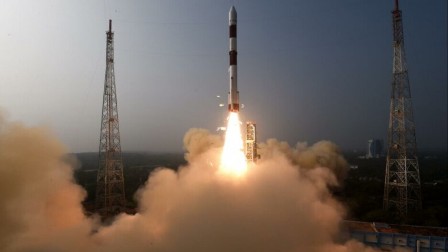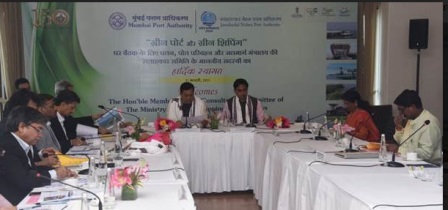Another win for ISRO, INSAT-3DS–meteorological satellite successfully launched

BENGALURU,FEB 17: After India launched a satellite to study black holes and neutron stars on January 1, the Indian Space Research Organisation (ISRO) on Saturday evening successfully launched INSAT-3DS, India’s exclusive meteorological satellite.
The satellite will provide continuity of services to the existing in-orbit INSAT-3D and 3DR satellites and significantly enhance the capabilities of the INSAT system.
“GSLV-F14/INSAT-3DS Mission: The vehicle has successfully placed the satellite into the intended geosynchronous transfer orbit,” said ISRO on platform X.
According to the space agency, the satellite is a user-funded project with the Ministry of Earth Science (MoES), with a Lift-Off Mass of 2275 kg. Indian industries have significantly contributed to the making of the satellite. The payloads on board will support enhanced meteorological observations, monitoring of land and ocean surfaces, and aid in weather forecasting and disaster warning.
The satellite will also work on Satellite Research and Rescue services (SAR). INSAT-3DS would serve various departments under the MoES—the Indian Meteorological Department (IMD), the National Institute of Ocean Technology (NIOT), the National Centre for Medium-Range Weather Forecasting, and the Indian National Centre for Ocean Information Services.
S Somanath, Chairman, ISRO addressing the nation post the launch said the satellite has been placed in a good orbit and is in “a great condition.” He added, “The vehicle has performed well and I congratulate all the teams and departments who worked on it. The next-generation weather payloads in the satellite will help with meteorological data collection. This mission has further increased the trust and confidence in GSLV. ”
The Chairman added that GSLV will next be used in the NISAR satellite, jointly developed by ISRO and NASA.
INSAT-3DS mission has been planned for 10 years The state-of-the-art payloads such as 6-channel Imager and 19-channel Sounder meteorology payloads, including communication instruments will record and provide data on cloud properties, fog, rainfall, snow cover, and snow depth, fire, smoke, land and ocean.
About 20 minutes after liftoff, scientists deployed the INSAT-3DS satellite into a Geosynchronous Transfer Orbit (GTO). Subsequently, orbit-raising manoeuvres will be done to place the satellite into a Geo-stationary Orbit, which is scheduled in the next couple of days.
-PTI








